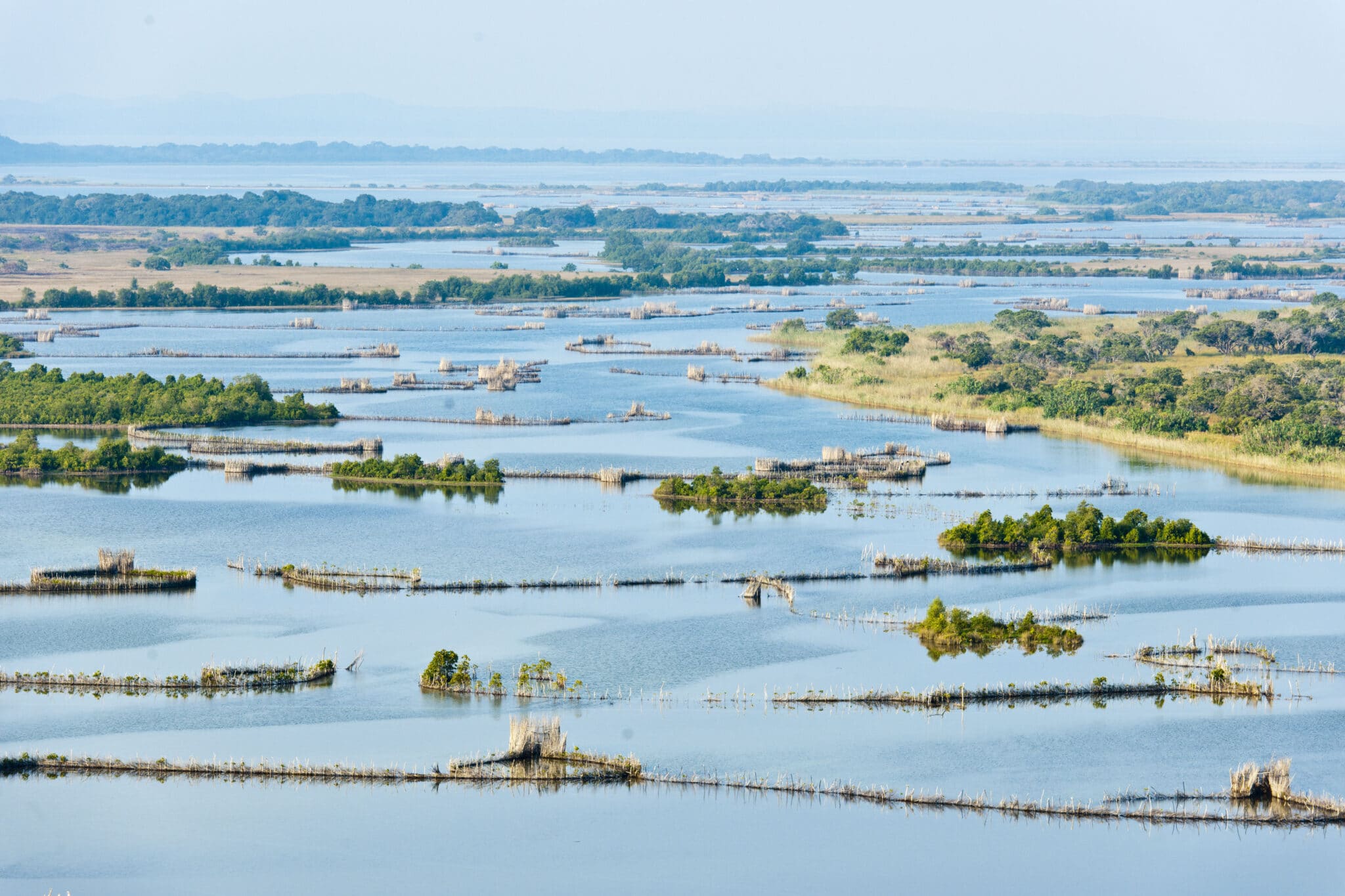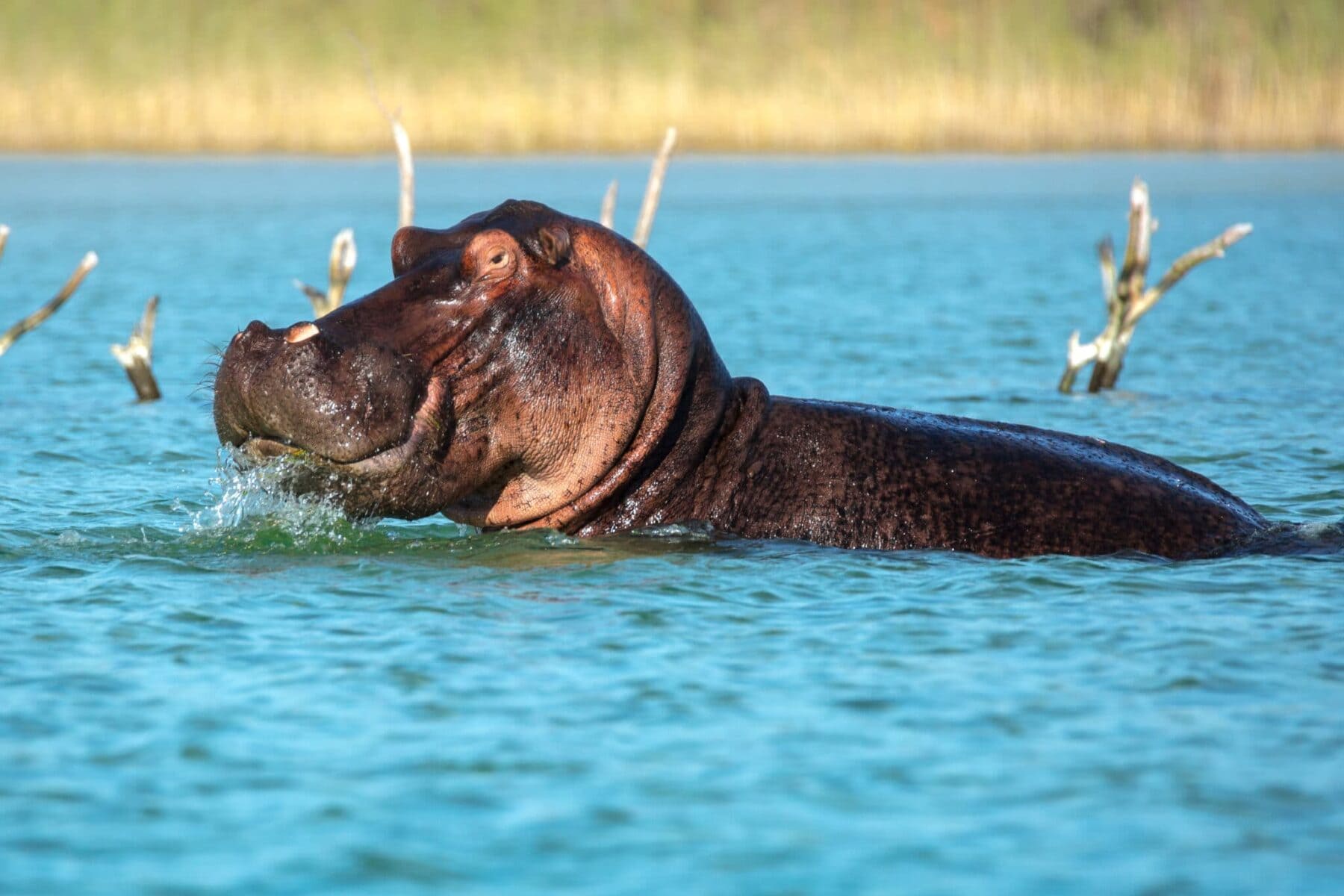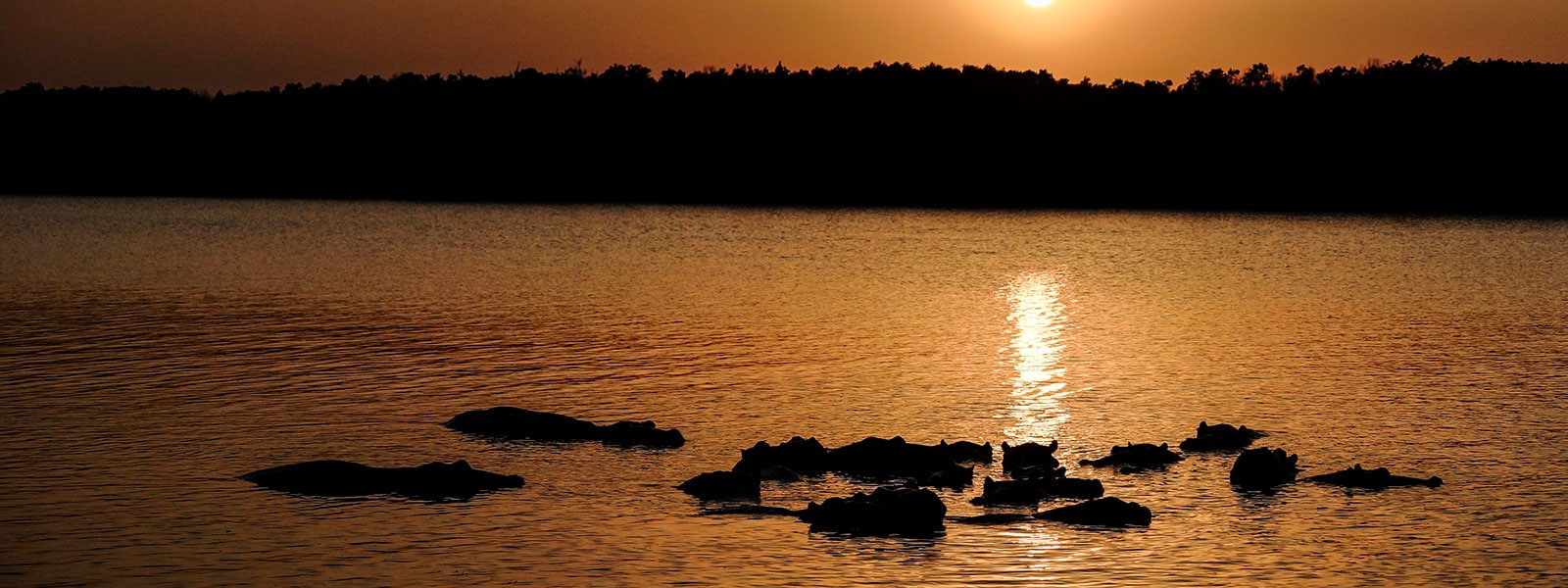A massive protected area along the coast of KwaZulu-Natal, iSimangaliso Wetland Park is a UNESCO World Heritage Site that is made up of a mosaic of ecosystems. Visitors here can see everything from coral reefs to wetlands, all supporting a vast array of wildlife and activities.
Deep-sea fishing, birdwatching, whale watching, boat cruises, kayaking, horse riding, and so much more can be done at iSimangaliso Wetland Park, making it the perfect place for active travellers.
Must-Visit Areas at iSimangaliso Wetland Park

Explore one of the best diving sites in the world as well as an expansive lake to spot the incredible species that call it home:
Lake St. Lucia: A Must-Visit for Birders
The centrepiece of iSimangaliso is Lake St. Lucia, Africa’s largest estuarine system. A range of ecosystems come together here, including sandy beaches, tropical seas, coral reefs, wetlands, and swamps.
A fantastic place for birders, during a birdwatching expedition you’ll be able to see more than 50% of the province’s water birds feeding, roosting, and nesting here. Other animals to spot include many species of antelope, such as waterbuck, reedbuck, kudu, nyala, impala, and duiker.
Sodwana Bay: Technicolour Corals
One of the top 10 diving destinations in the world, Sodwana Bay is a must-visit for travellers who want to scuba dive and snorkel.
The expansive coral reef systems here contain over 1,200 species of fish, including scorpion fish, sharks, rays, slingers, and octopuses, to name a few. While in these waters, you may also spot turtles, and whales pass through this area while migrating.
uMkhuze Game Reserve: White Rhino Sightings
This reserve offers reliable sightings of white rhinos, especially in the dry season when the vegetation is less dense. While predator sightings are rare, the herds of antelope species (like nyala, waterbuck, and eland) are enchanting.
The acacia savannah, rivers, pans, and riverine forests are also fantastic for birdwatching, with over 420 species calling this game reserve home.
When’s the Best Time to Visit iSimangaliso Wetland Park?

KwaZulu-Natal’s dry season from May to September is the best time to visit iSimangaliso for game viewing. November to March is also an incredible time of the year, as this is when you can see sea turtles nesting.
Wildlife Found at iSimangaliso Wetland Park

iSimangaliso is a paradise for wildlife lovers! For birders, there are over 500 species of birds around the park, with many waterbirds at Lake St. Lucia.
The variety of big game makes game drives thrilling. Hippos and Nile crocodiles can be seen in rivers, while on land you can spot giraffes, a variety of antelope species, zebras, and rhinos. Predator species can be challenging to find.
Although seeing big cats is rare, iSimangaliso was the location of a rare strawberry leopard sighting. They get this name from their spots, which are a reddish, strawberry-blonde colour instead of the usual black.
How to Get to iSimangaliso Wetland Park
Travellers can fly into Richards Bay Airport, which is the nearest airport to iSimangaliso. From here it’s just over an hour’s drive to the park via lodge transfer.